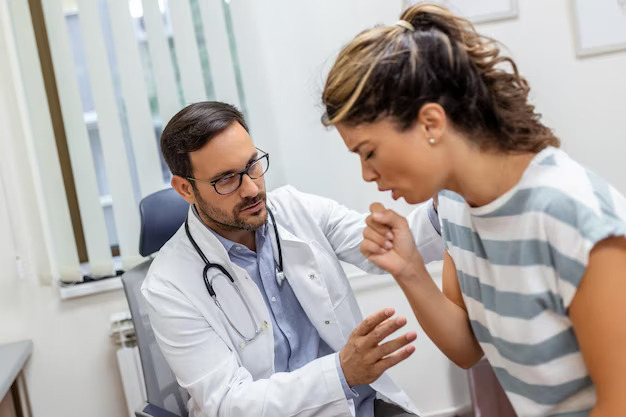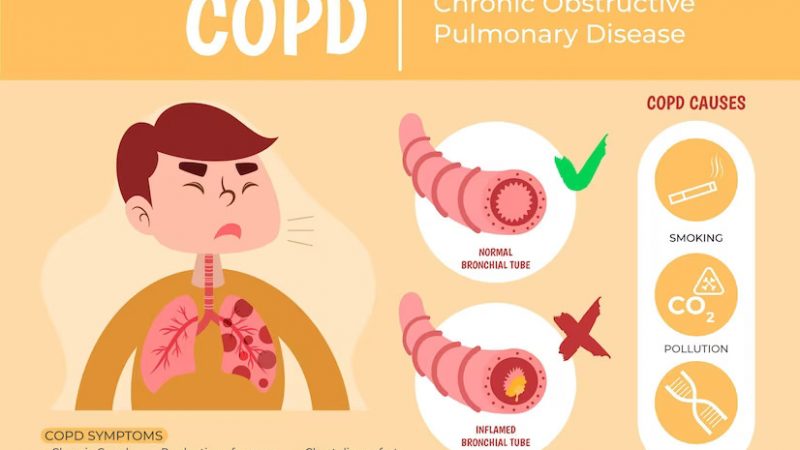Pulmonary Function Testing (PFT) : Spirometry

What are PFTs for lungs?
Pulmonary function tests (PFTs) are noninvasive tests that are performed to check how well the lungs are working. Since these tests are noninvasive, the doctor does not need to make any kind of incision or insert any other tool into your body.
Why are PFTs performed?
Pulmonary Function tests are primarily done to test the functioning of lungs which helps in diagnosing certain lung diseases like:
- Lung Cancer- The type of cancer that begins in lungs. There are two types of lung cancer: o SCLC – Small cell lung cancer
- NSCLC – Non-small cell lung cancer.
- NSCLC includes squamous cell carcinoma, large cell carcinoma and adenocarcinoma.
- Damaged or scarred lung tissue
- Chronic bronchitis – is an inflammatory disease of bronchi which is common in smokers.
- Asthma
- Allergies
- Sarcoidosis – it is a collection of inflammatory cells around organs
- Lung infections
- Chronic Obstructive Pulmonary disease (COPD) – is a chronic inflammatory disease of lungs that causes obstructed airflow from lungs.
- Weakness of muscles in the wall of the chest
- Thickened, stretched or enlarged airways
What is spirometry?
Spirometry is one of the most common types of PFTs which is done to measure the amount of air you breathe in and out of your lungs and also the speed at which you can blow the air out of your lungs. It is done as a part of the group tests known as PFT or pulmonary function tests.
Why is spirometry done?
Spirometry is a standard procedure that your doctors at Yashoda Hospital and Research Centre, Nehru Nagar, Ghaziabad may use to diagnose COPD, asthma, restrictive lung disease like pulmonary fibrosis or other lung infections.
Who is the right candidate for Spirometry?
Spirometry is done to test the functioning of your lungs. If you are experiencing the following, you may be asked to undergo spirometry:
- Symptoms such as coughing, wheezing, breathlessness, crackles etc which suggest pulmonary diseases
- If you are already a patient of COPD, asthma, interstitial fibrosis, spirometry will be done to keep track of your progress during the treatment.
- If you are to undergo abdominal surgery or cardiothoracic surgery, spirometry will be done to evaluate your condition before the surgery.
- If you are exposed to pulmonary toxins like radiation, medication etc, you will be asked to undergo spirometry.
- If you have undergone lung transplantation, you will need to undergo spirometry to check for acute rejection, infections or obliterative bronchiolitis.
- If you are at risk of certain respiratory complications such as connective tissue disorders or neuromuscular diseases, you will be asked to undergo a spirometry test.
What do you need to do before a spirometry test?
Since the spirometry is related to breathing, you should follow the following instructions before undergoing spirometry:
- Do not smoke before the test.
- Do not consume alcoholic products.
- Eat a small meal as heavy eating may impact your ability to breathe
- Wear loose clothing so that you are able to breathe at ease
- Avoid any medications that are inhaled before the test
Procedure: How is spirometry done?
A spirometry is usually done at your doctor’s office and it may take around 15 to 20 minutes to complete. The procedure is described below:
- Calibration: Your doctor will calibrate the instrument or device before performing spirometry. For optimum performance, spirometric values will be checked using a biological control i.e. a healthy person working in the hospital’s team.
- Patient Positioning: In this test, patient’s posture and position is important so the following may be taken into account while positioning the patient for the test:
- The patient inhales and exhales different amounts of air while sitting and lying. So, in order to test for the amount of the air he breathes, the patient will be asked to sit upright.
- The patient should keep his feet flat on the floor with legs uncrossed and should not use abdominal muscles for leg position.
- Clothing may be loosened if it’s too tight
- An Armed chair is provided for the patient to support him when there are chances of light-headedness or fainting while exhaling maximally.
- The Technique for spirometry:
- Your doctor will ask you to inhale as much air as you can and hold it for a few seconds and then exhale the air as hard as you can until there is no air left inside your lungs.
- You will need to repeat the above step for as many times as the doctor asks you to. After performing this exercise, the doctor will record the readings as the result of the test.
- Your doctor may give you a medication to be inhaled after a few rounds of the test if you are at the risk of a breathing disorder. And again the same procedure will be
followed to measure the airflow.
Are there any side effects of spirometry?
Since spirometry involves heavy and forced breathing, the patient may experience dizziness, coughing, asthma attack, shortness of breath immediately after the test. In some cases, the spirometry may trigger severe breathing problems.
The test is not recommended for patients with cardiac or heart complications. Your doctor may also avoid this test if you have undergone eye surgery, abdominal surgery, and chest surgery. In case of chest pain, heart attack, aneurysm (a bulging blood vessel in your belly, chest or brain), TB or respiratory infection, you may not be recommended this test.
Measurement
What are the normal values of spirometry test results?
Based on the patient’s age, gender, height, and race, the results of spirometry may vary for every other person. The expert doctors at Yashoda Hospital and Research Centre, Nehru Nagar, Ghaziabad, calculate the predicted normal value for you before the test. This predicted value is then compared with the values obtained from the test and if the values of test result are above or equal to 80% of the predicted values, the test result is considered as normal.
There are two key factors that are measured in a spirometry:
- Forced Vital Capacity (FVC): It refers to the total maximum amount of air that you can exhale forcefully after the hardest possible deep breaths. You have a breath complication if the FVC value is lower than normal. The following table shows the comparisons for different age groups:
Abnormal FVC may indicate the presence of restrictive or obstructive lung disease.
- Forced Expiratory Volume (FEV1): It is the amount of air that the patient can exhale by force in one second. This kind of measurement helps the doctor determine the severity of the patient’s breathing problem. Grading of the severity of breathing complications is done as the following, based on FEV1 levels:
FEV1/FVC ratio is the number that shows the patient’s lung capacity of being able to exhale in one second. A higher FEV1/FVC ratio indicates healthy lungs while a lower ratio suggests lung complications. The following table shows the results for children and adults: What are the next steps after the spirometry? After performing spirometry for lung diseases, our doctors, Dr. Brijesh Prajapati and Dr. Neerav Tyagi at Yashoda Hospital and Research Centre, Nehru Nagar, Ghaziabad will do the comparisons as suggested in the above tables. And, if the doctor discovers any abnormality in the results, he may suggest some other tests to confirm the kind of breathing disorder. The possible tests may include blood tests and chest and sinus x-rays. Abnormal spirometry results suggest the presence of obstructive diseases like asthma and COPD. These results may also indicate the presence of restrictive diseases such as interstitial pulmonary fibrosis. Based on the results of various tests along with spirometry, the doctor may also screen for conditions like heartburn, hay fever, and sinusitis.
| Age Group | Percentage of Predicted FVC | Result |
| Children (5-18) | 80% or greater | Normal |
| Less than 80%/td> | Abnormal | |
| Adults (Above 18 | Greater than or equal to the lower limit of normal | Normal |
| Less than the lower limit of normal | Abnormal | |
| Percentage of Predicted FEV1 value Result | ||
| 80% or above Normal | ||
| 70%-79% Mildly abnormal | ||
| 60%-69% Moderately abnormal | ||
| 50%-59% Moderate to severely abnormal | ||
| Less than 35% Very severely abnormal | ||
| 35%-49% Severely abnormal | ||
| Age Group Low FEV1/FVC ratio | ||
| Children (5 to 18) Less than 85% | ||
| Adults (above 18) Less than 70% |



